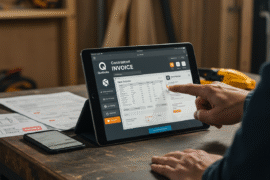This article may contain references to products or services from one or more of our advertisers or partners. We may receive compensation when you click on links to those products or services. Nonetheless, our opinions are our own.
The information presented in this article is accurate to the best of our knowledge at the time of publication. However, information is subject to change, and no guarantees are made about the continued accuracy or completeness of this content after its publication date.
- Key Highlights
- Introduction
- Exploring Equity Risk Premium
- Beginner’s Guide to Equity Risk Premium
- Practical Applications of Equity Risk Premium
- Conclusion
- Frequently Asked Questions
- What Determines the Size of an Equity Risk Premium?
- How Often Should Equity Risk Premium Be Reevaluated?
- What is the equity risk premium, and why is it important for investors?
- How do you calculate the equity risk premium using historical data?
- What factors can influence changes in the equity risk premium over time?
- How does the equity risk premium impact investment decisions and portfolio management?
- Recommended Reads
Key Highlights
- The equity risk premium pays investors more for taking higher risks in the stock market than in safe places like government bonds.
- You find it by checking the difference between the expected market return and the risk-free rate, usually using historical data.
- Tools such as the capital asset pricing model (CAPM) are good for calculating the equity risk premium, which helps with decisions.
- This measure is important for investment strategies. It helps manage portfolios and considers possible rewards in the stock market.
- Economic changes, market conditions, and interest rates can impact the equity risk premium over time.
Introduction
Understanding the equity risk premium is very important for anyone in the stock market. This idea shows how much more return investors expect when they invest in stocks instead of safer choices like government securities. The expected return points out the risks that come with market changes or issues with certain companies. By understanding this key measure, you can assess how good an investment is and make smart choices. Are you ready to see how this formula can affect your financial future? Let’s look at it more closely!
The equity risk premium shows the trade-off between risk and reward in stock investing. It is the extra return that investors hope to get when they pick stocks instead of safer choices like Treasuries. This measure tries to estimate future returns, but it depends a lot on historical data. So, it is more of a guess than a precise number.
We compare the stock market’s performance to government bond yields to find the equity risk premium. The results may change because these calculations can vary. This means the outcomes might be different depending on how and when we look at them.
Definition and Importance
The equity risk premium is the extra money that investors earn when they put their money in the stock market instead of safer options. This extra return is the reward for accepting more risk with stocks. On the other hand, safer choices, like government bonds, provide more security. It’s important to have a balance between risk and the opportunity for greater rewards.
This premium is key for both investors and company managers. For investors, the equity risk premium helps them choose whether to invest in stocks or stick with safer options. For companies, it indicates the returns they must offer to attract more investments.
Data shows that, over a long term, taking on more risks can result in better returns. But several factors, such as interest rates, the economy, and inflation, can greatly affect this. These factors can change how people plan their investments in different situations.
Historical data shows key facts about how the equity risk premium changes over time. The Dow Jones Industrial Average lets us compare the returns on stocks to those of risk-free assets. It uncovers long-term trends and patterns.
The average return of the S&P 500, including dividends, usually outperforms safe options like Treasury Inflation-Protected Securities (TIPS). This highlights the benefits of investing in stocks, even though they come with higher risks.
Survivorship bias can affect our views. It only looks at successful markets, like the U.S. But we need to remember that stock markets have failed in the past. This shows us that the equity risk premium can change and is not always the same. By studying past equity returns, investors can understand what might happen in the future. It helps them consider market volatility and other economic factors.
Voted "Best Overall Budgeting App" by Forbes and WSJ
Monarch Money helps you budget, track spending, set goals, and plan your financial future—all in one app.
Get 50% OFF your first year with code MONARCHVIP
Understanding the equity risk premium is important for investors. It shows what returns they might expect from equity investments. This measure indicates the extra return from stocks compared to safer options, like government bonds. The equity risk premium plays a major role in the capital asset pricing model (CAPM). This model helps investors evaluate market risks. They can estimate the equity risk premium that fits their investment goals by looking at data and past trends. Investors should also remember that stock returns can change a lot.
Essential Tools and Resources Needed
You’ll need some tools and resources to check the equity risk premium correctly. A key tool is the capital asset pricing model, commonly known as CAPM. This model provides a formula to calculate expected equity returns. CAPM looks at risk-free rates, beta coefficients, and market premiums. This is very important for understanding value and risk.
To improve your estimates, you can use valuation tools. These include dividend models and earnings-based models. These tools provide different views of expected growth. They help you assess potential returns effectively.
Assessing risk is important. Tools like TIPS help us check real rates of return and change inflation predictions. To get full calculations, experts may use surveys or the building block method. These methods consider market opinions and specific risks. All these tools help us better assess equity premiums, which can improve investment strategies.
Step-by-Step Guide to Understanding the Formula
The equity risk premium is found using the CAPM method. Let’s break it down to make it simple for you:
Step 1: Identifying Risk-Free Rate
The risk-free rate is important when figuring out the equity risk premium. This rate usually comes from government bonds. For example, U.S. Treasury bills or bonds have very low risk.
TIPS, which stands for Treasury Inflation-Protected Securities, give you real rates that adapt with inflation. This change makes them useful for long-term plans. Although government assets aren’t completely free from risk because of interest rate changes, they are more stable than other choices.
Using this rate as a guide helps investors check how stocks are performing. When the risk increases, investors seek a higher return from stocks. This way, they can maintain the value of their investments. So, understanding the risk-free rate is crucial. This knowledge helps make accurate calculations of the equity premium.
Step 2: Calculating Market Return
The market return shows us how well stocks perform over time. This information helps us understand equity risk premiums. Investors usually look at indices like the S&P 500 or the Dow Jones Industrial Average.
To find expected market returns, you add several things together. This includes past stock returns, dividends, and estimates about long-term growth. You can use models that consider earnings or dividend yield. It’s also important to figure out the nominal return before adjusting for inflation.
For example, the S&P 500 may have average yearly returns of 15%. If the risk-free rate is 2.5%, you take that number away from the returns. This gives you an equity risk premium of 12.5%. Knowing the expected market return helps investors understand the balance between risk and reward in equity markets.
The equity risk premium is very important for investors and portfolio managers. It is more than just a concept. It helps them see why stocks can be better than risk-free investments. By understanding this, they can make better decisions in different situations.
Managers use this method to plan their strategies and check risks. They also determine the standards for the cost of capital. At the same time, investors learn to make smart choices. They look for a balance between higher-risk stocks and safer investments. Want to see how this works? Next, we will look into its use in investments and portfolios.
Role in Investment Decisions
When choosing where to invest, the equity risk premium can help you. It shows you the potential rewards of investing in stocks versus safer options. A high equity risk premium means stocks look better because they can give you higher returns than safer investments.
For example, XYZ Corporation has a beta of 1.25 and a market premium of 12.5%. Because of this, its equity risk premium is 15.63%. This makes it attractive to investors who want higher returns, even if it carries more risk.
Knowing this information helps investors take care of their portfolios. They can mix risky stocks with safer ones to get better returns. This understanding allows them to make better choices when looking for stocks that are priced too low and taking risks that match their long-term financial goals.
Impact on Portfolio Management
The equity risk premium is key for managing portfolios. It helps figure out the cost of capital and the risks involved. Portfolio managers rely on this premium to find the right rate of return. This way, their investments match the level of risk they can accept.
A high equity premium can make people want to invest more in stocks rather than bonds. This usually means the market is doing well. On the other hand, a low equity premium can make them more careful. They might pick safer investments to avoid losses.
Understanding systematic risk along with the equity risk premium can highlight weak points in investment portfolios. This knowledge allows managers to make adjustments that lower their risk. By using this approach, returns can increase while still being cautious about risk. It helps create stronger portfolios in the long term.
Conclusion
In conclusion, every investor needs to understand the equity risk premium to make good choices. Knowing what it is, its history, and how to use it can help you improve your investment plans and better manage your portfolio. The steps in this guide give you useful tools to calculate and use the equity risk premium well. Also, remember to stay updated with market changes and check your calculations often. This will help you handle the challenges of investing. If you want to learn more about these ideas, think about getting a consultation or more resources to increase your investment knowledge.
Frequently Asked Questions
The equity risk premium is linked to the market risk premium. This premium changes with the level of risk in equities. When risks are higher, people seek more rewards. Economic conditions and stock market volatility also play a role in how this premium varies over time.
You should examine equity risk premiums often, especially when the market changes. You should also review forecasts, economic trends, and interest rates. This will help ensure that your strategy fits the current financial situation.
The equity risk premium is the extra return that investors expect to receive from stocks rather than from safer investments. This concept is important for grasping potential returns. It helps in making wise investment choices by weighing risks against expected rewards in long-term financial plans.
Equity risk premiums are found by subtracting the risk-free rate from the market returns from the past. This gives an idea of what future returns could be like, helping investors understand stocks’ potential. Investors can then adjust their plans based on these equity risk premium estimates.
Interest rates, economic conditions, inflation, and changes in the stock market can change equity risk premiums. These elements affect the mix of risk and reward. This can influence how confident investors feel and can make equity investments seem more or less appealing.
Equity risk premiums help investors decide by showing risks and rewards. They affect how people create their portfolios. Managers use equity risk premiums to find the cost of capital and reduce market risks. This way, they ensure that portfolios aim for better returns while keeping risks in check.

Reviewed and edited by Albert Fang.
See a typo or want to suggest an edit/revision to the content? Use the contact us form to provide feedback.
At FangWallet, we value editorial integrity and open collaboration in curating quality content for readers to enjoy. Much appreciated for the assist.
Did you like our article and find it insightful? We encourage sharing the article link with family and friends to benefit as well - better yet, sharing on social media. Thank you for the support! 🍉
Article Title: Equity Risk Premium Formula: Simple Math, Big Impact
https://fangwallet.com/2025/05/06/equity-risk-premium-formula/The FangWallet Promise
FangWallet is an editorially independent resource - founded on breaking down challenging financial concepts for anyone to understand since 2014. While we adhere to editorial integrity, note that this post may contain references to products from our partners.
The FangWallet promise is always to have your best interest in mind and be transparent and honest about the financial picture.
Become an Insider

Subscribe to get a free daily budget planner printable to help get your money on track!
Make passive money the right way. No spam.
Editorial Disclaimer: The editorial content on this page is not provided by any of the companies mentioned. The opinions expressed here are the author's alone.
The content of this website is for informational purposes only and does not represent investment advice, or an offer or solicitation to buy or sell any security, investment, or product. Investors are encouraged to do their own due diligence, and, if necessary, consult professional advising before making any investment decisions. Investing involves a high degree of risk, and financial losses may occur including the potential loss of principal.
Source Citation References:
+ Inspo
There are no additional citations or references to note for this article at this time.












































